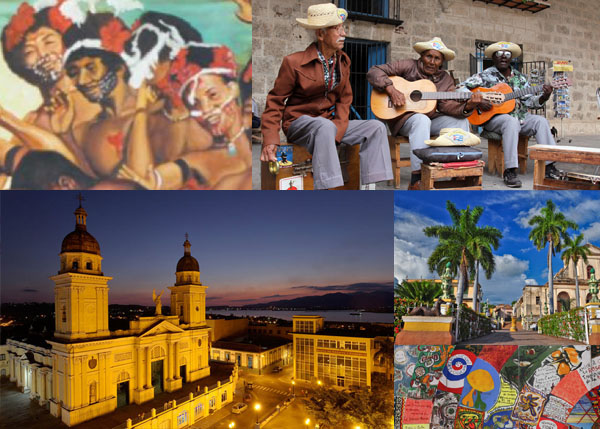11.9.1 Enrique González Mántici.

Enrique González Mántici, Cuban composer, violinist, and conductor, was born in Sagua la Grande, Pinar del Río province, on November 24, 1912.
He began his musical studies with his mother and later studied violin with José Valls. He won First Prize and a Gold Medal for his dedication. He later received composition classes from Rafael Pastor and Emilio Grenet, and conducting classes from Erich Kleiber. He took courses in performance and conducting at the Tchaikovsky Conservatory in Moscow with Anosov, Gauk, and Gumsburg.
He served as first violin of the Havana Quartet and Symphony Orchestra. He was the conductor of the Radio Mil Diez Orchestra and founding director of a concert orchestra he trained at CMQ Radio. He also conducted the famous Riverside Orchestra. He was also musical director of the Pro-Arte Musical Society and the Cuban National Ballet Orchestra.
Enrique González Mántici was an illustrious Cuban composer and conductor; founder of the National Institute of Music (452 Calle 15 esq. a F, Vedado, Plaza de la Revolución, Havana City). In 1961, he became principal conductor of the newly formed National Symphony Orchestra. In Europe, he conducted the Leipzig, Berlin, and USSR Radio Symphony Orchestras. He toured South America with the Cuban Ballet and conducted important orchestras in Santiago, Chile, Buenos Aires, and Uruguay.
In 1962, he attended the International Tchaikovsky Competition in Moscow as a guest of honor, and in 1964 he served as a violin juror at the Enescu Competition in Bucharest. In 1963, he embarked on a tour of the Soviet Union and China, and had the opportunity to conduct the Leningrad Symphony-Philharmonic, the Moscow Radio Symphony, orchestras from Armenia, Georgia, Baku, and the Beijing Central Symphony. He also toured Poland, the GDR, Romania, Hungary, and Bulgaria. He accompanied soloists such as David Oistrav, Leonich Kogan, Mtislav Rostropovich, Evelio and Cecilio Tieles.
Enrique González Mántici was a professor of orchestral practice at the National School of Art (120th Street between 9th and 13th Streets, Cubanacán, Playa, Havana). He composed pieces for symphony orchestra and chamber music, including: “First Concerto for Violin and Orchestra”, 1953; “Pregón and Dance for Orchestra”, 1954; “Second Concerto for Violin and Orchestra”, 1957; “Three Pieces for Piano”; “Cimarrón” (for Alberto Alonso’s dance ensemble); “Guerrillero”, a march, 1960; “Vocal Triptych”, for soprano and piano, with his own texts; “Sinfonía concertante”, for cello and orchestra; “Triptych”, for string orchestra; “Trio”, for clarinet, oboe and bassoon; “El circo” and “Mestiza” (based on Cecilia Valdés), a ballet, 1966.
His musical output offers an undeniable blend of classical and folk music. The Rodrigo Prats Llorens Music Museum (157 Solís Street between Martí and Maceo, Sagua la Grande, Villa Clara) in Sagua la Grande houses an important collection of this celebrated musician, including scores, personal belongings, documents, his electric organ, and photographs.








